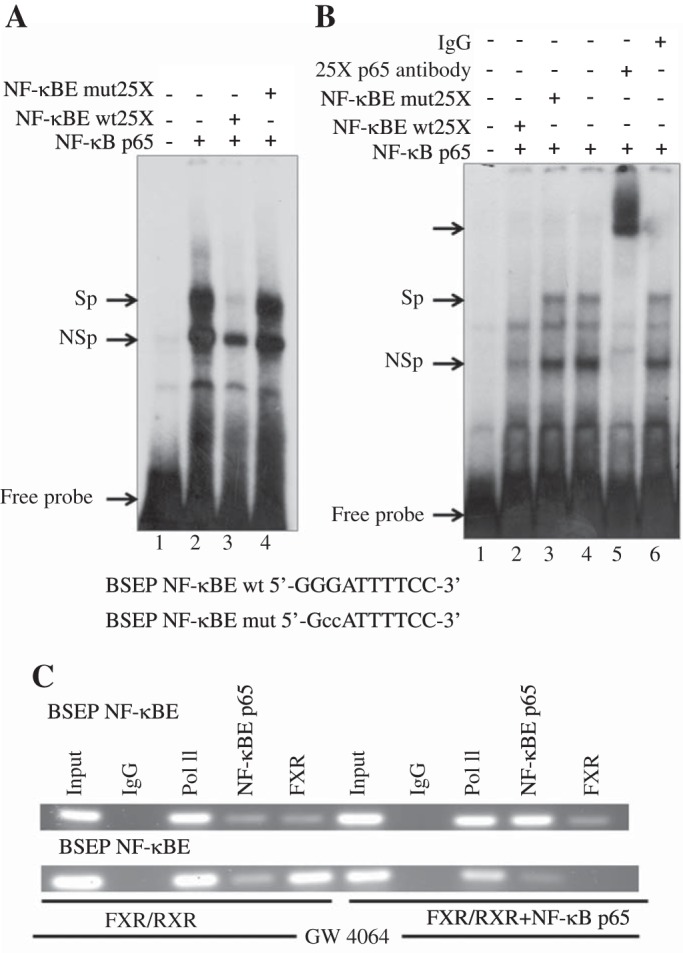Fig. 1.

NF-κB p65 binds to an NF-κB binding element (NF-κBE) in human BSEP promoter. A: Huh-7 cells were transfected with an expression plasmid for human NF-κB p65. Nuclear extracts were prepared using the NE-PERkit (Thermo Fisher Scientific) according to the manufacturer's directions. EMSAs were carried out as described in materials and methods using a 32P-labeled human BSEP NF-κBE. A, top: cDNA used for transfection of Huh-7 cells from which the nuclear extracts were prepared and the probes and competitors used (at 25-fold excess) in the assay. Sp, specific DNA-protein complex; NSp, nonspecific complex. DNA sequence of the wild-type (wt) and mutant (mut) NF-κBE shown with the mutated residues indicated in lowercase. B: in vitro translated NF-κB p65 was used in EMSA with BSEP NF-κBE as a probe as described in materials and methods.“Unprogrammed” reticulocyte lysate (lane 1) and reticulocyte lysates programmed with NF-κB p65 (lanes 2–6) cDNA were incubated with BSEP NF-κBE probe. Competition analysis was performed with unlabeled 25-fold molar excess of wild-type (lane 2) or mutant NF-κBE (lane 3). Lane 5 was incubated with NF-κB p65 antibody. C: chromatin immunoprecipitation (ChIP) analysis using Huh-7 cells transfected with NF-κB p65 confirmed binding of NF-κB p65 to the BSEP NF-κBE but not the farnesoid X receptor (FXR) element. Gel shows RT-PCR reaction products generated using primers designed to amplify BSEP NF-κB p65 binding site. In these cells transfected with FXR/RXR recruitment or binding of FXR/RXR to the FXRE in BSEP promoter was blocked by expression of NF-κB p65 There was no recruitment of NF-κB p65 to the FXRE. IgG and Pol II are negative and positive controls, respectively.
